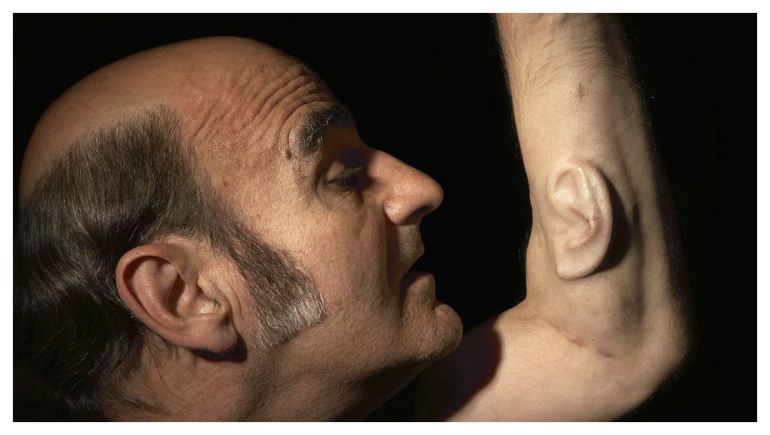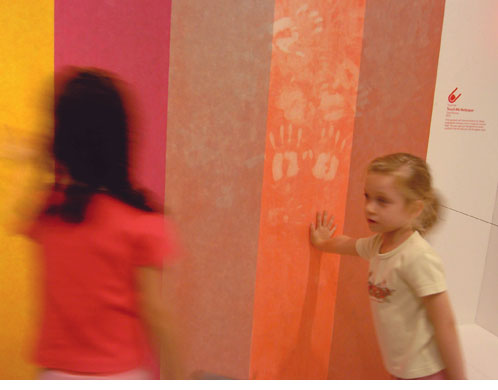Skinning the Interfaces
"It is fascinating to examine more closely the initially contradictory levels of meaning of such a tension-filled word as skinning. Most commonly 'skinning' refers to the act of removing the skin from a dead animal. By extension, skinning can be understood metaphorically as scaling something down, or removing much of the essence of something. Ironically, what is understood in the physical context of the body as 'taking away' is now in the language of digital culture an 'adding on', where skinning refers to the design of surfaces, for example, in video games. It may describe the process of creating 2-D textures to be applied to 3-D meshes, or creating 'skins' as themes to change the appearance of a computer program. Software capable of having a 'skin' applied is referred to as being skinnable. We might ask how our culture has arrived at this astonishing degree of reflexivity - which seems to be reflected linguistically i the reversibility of levels of meaning - and if, in light of the transitivity of verbs, contradiction even exists here." (Hauser, 2008:9)
Human Hunting Trophy
"This work incorporate a human bust which stands out from the wall like a stuffed hunting trophy. A brass plaque attached underneath bears the name of the person represented, the date of the setting, and if required the name of the person who placed the order.
The plaster cast of the model provides a remarkable reproduction of the minutest details of the skin and reveals the various imperfections which make the surface of the body look so distinctive.The different parts of the cast are adapted to a standardized structure (available sizes : man, woman, child).
Self representation is a sign in space :
The Human Hunting Trophy aims at concerving the living physionomy of a person. The idea is to give an image to one's existence.
The carved portrait retains the facial appearance of mortal.This operation of representing, fixing and multiplying the model, then immortalizes it.The portrait becomes a sign belonging to a territory. This territory exists because of its inherent profusion of matter and history. What is interesting is that it does not only represent a person, but that it is a metaphor of the space it belongs to.
The Human Hunting Trophy is not a carving but a cast of the model. This metonymical contiguity between the model and the trophy makes it all the more problematic as it is close to the self, because of the affective relation between self and the image of the self and between the self and other people's perception of it."
Art Oriente objet - Skin Culture (1996)
In Artists' Skin Culture, epidermal cells of both artists have been cultivated, then grafted onto pig derma, before finally tattooing it with motifs of endangered species. These trans-species totems are ultimately and ideally grafted onto compliant art collectors, who can then make these art bodies literally part of their own. According to the duo, the work shows 'the projection of a hybrid world where inter-species transplants would be common currency, and the distinctions between different living species would be blurred until they finally disappeared altogether.' |
| Post Succour perfomance 2001 (legs) |
Kira O'Reilly
O'Reilly's work mainly focuses on how the body is now and the relationship between bodily interior/exterior spaces are explored as a continuum. "The permeable boundaries of the skin membrane defy it as an impenetrable container of a coherent or fixed self" (Hauser, 2008:30). She does this by removing the barrier between her own body and public space, in her art such as Blood Drawings and also the surgical procedures she carries out. This singular mapping of the human body involves a way towards 're-conceptions of the body and embodiment' (Hauser, 2008:30).
"When the evolutionary process shifts from biology to software technology the body becomes the old hardware environment. The human body is now a probe, a laboratory for experiments" - Marshall McLuhan
McLuhan's argument is that electronic mediation has vastly distended our bodies to the pint that we live in a totally embodied cosmos, but that by virtue of this extension our bodies are now outside us. To this extruded body McLuhan gave the name 'environment and it is there that we now live - in a 'nature' of our own making. (Hauser, 2008:36)

Stelarc - Ear on Arm
It was not safe for the ear to be positioned on his head, so instead it was placed in his arm. Using tissue culture and biodegradable scaffold techniques a partially living construct was made. This though could not be prosthetically attached to the body so was an incomplete organ without a body. The ear that was transplanted not only hears but transmits. It was constructed first by making a 3D sculpture and animation which is particularly interesting, as something that was created on the computer based off of real life body part, was then translated back into something physical. Our bodies are constantly flowing from online to reality. "...this project has been about replicating bodily structure, relocating it and now rewiring it for alternate functions. It manifests both a desire to deconstruct our evolutionary architecture and to integrate microcrominiaturized electronics inside the body." (Hauser. 2008:102)
The skin itself is an intelligent interface, reacting and protecting from outside stimuli.

Zane Berzina - Touch Me (2006)
She explores the link between the skin and the brain in her interactive installations. She chooses ordinary objects as a starting point, such as books or walls and adds thermochromic pigments which reacts to changes in temperature in combination with human body heat as a trigger for colour change processes.


Olivier Goulet's -SkinBag Corps
"Goulet's Skinbag family is mad up of synthetic skin, bags, accessories and overgarments with their distinctive folded texture, flexible material and seamless, organic appearance linked to the way they are cast. You can view the SkinBags as bodily extensions, external organs that serve as holdalls for the items we have around us. Covers for computers, cameras, pods ad other digital components are multimedia second skins that convey the miniaturization and fragmentation of computers distributed on the surface of and inside our bodies, which will end up being connected to our brains." (Hauser, 2008:150).
It is certainly interesting to see the extent that skins and surfaces are viewed from and biological and technological point of view. Although it seems the physical skinned body, and the technological interfaces contradict each other, they seem to work hand in hand for connectivity, response and being of the self. We are heading towards a futures where either technology and its interfaces will he embedded into our physical body, or we will embody into these technologies. It certainly raises interesting discussions about our futures, as well as grounds us constantly to our physical body, making us aware of its capabilities and form. This is something I'd like to explore in my photography/installation project, as I think it is an important subject to me, and something that is becoming increasingly taken into account. We are all connected to our 'second body' and that is one on online interfaces.
Sources: Hauser, Jens. Sk-Interfaces. Liverpool: FACT, 2008. Print.




No comments:
Post a Comment